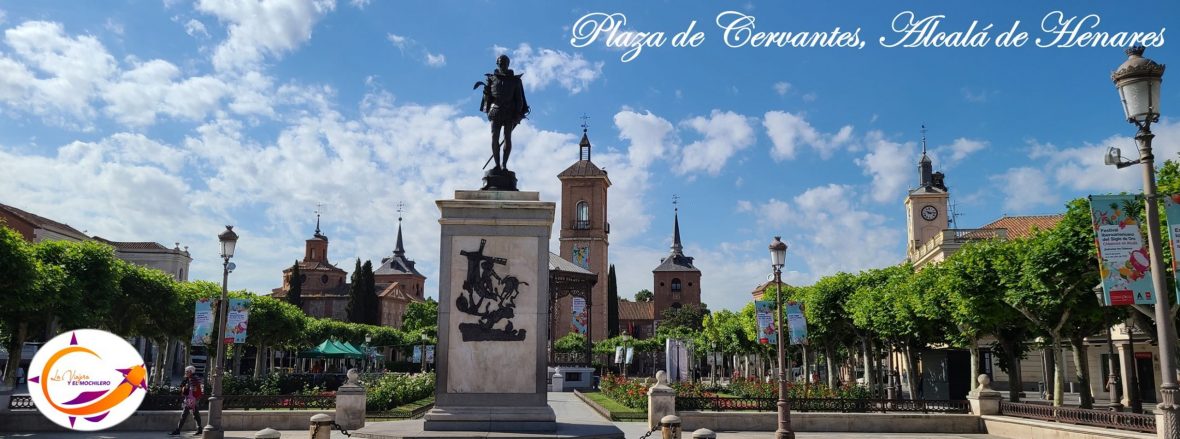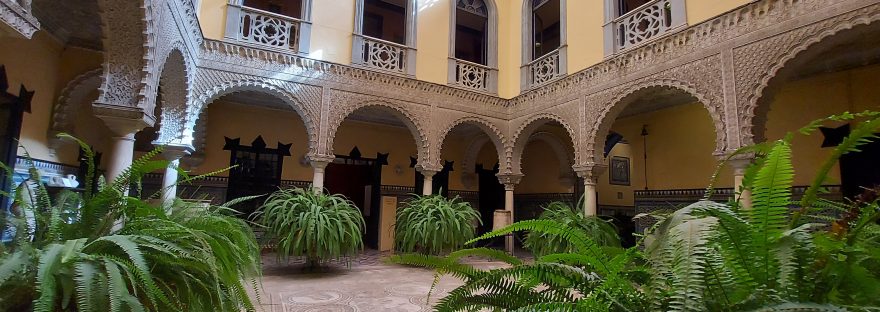While visiting Seville, a city in Andalusia, Spain, we arrived at the palace-house, considered the best paved in Europe, due to the impressive collection of Roman mosaics that are the surface of its first floor. This is the Palace of Lebrija, also known as the Palace of the Countess of Lebrija.
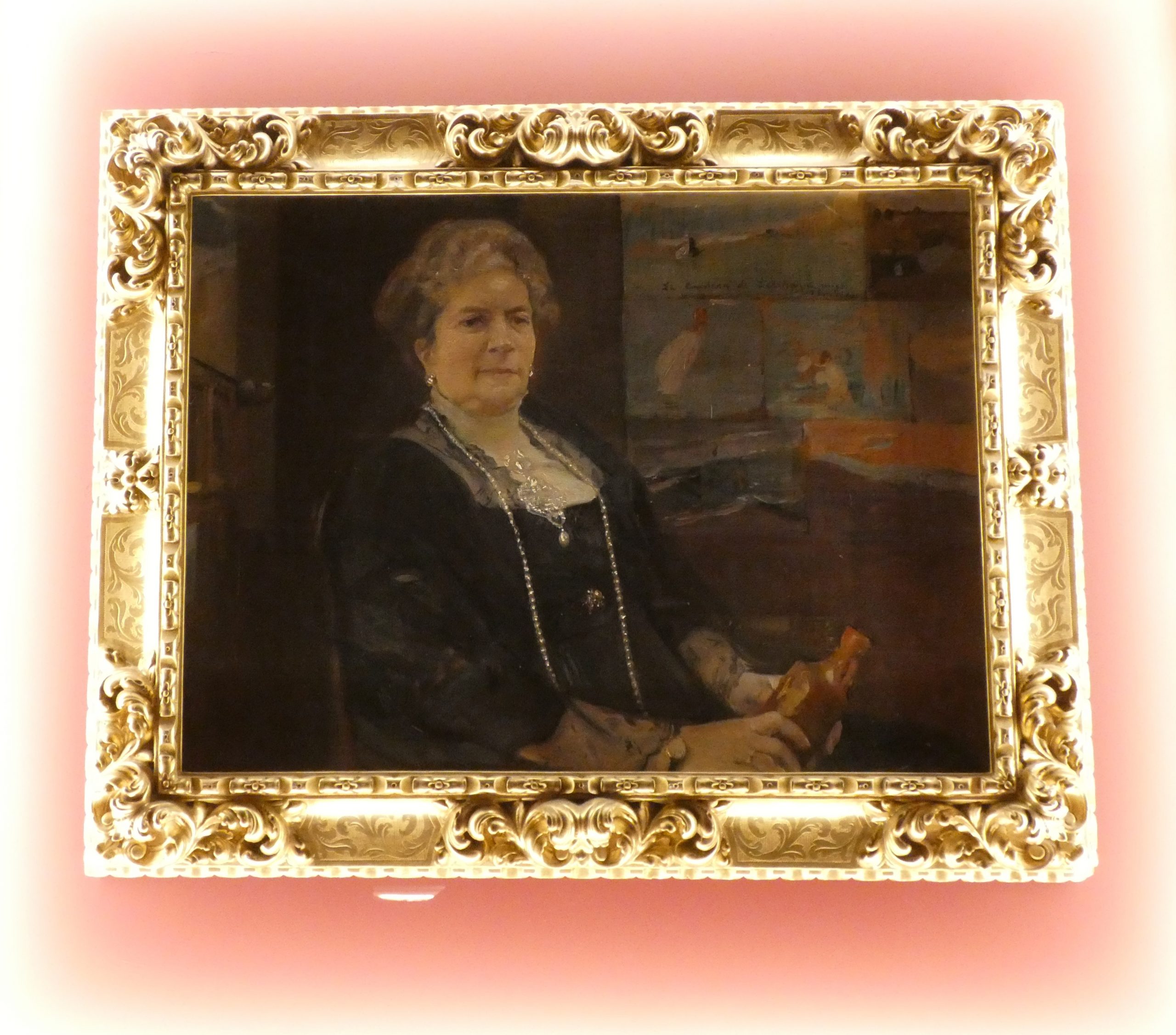
Although its construction dates to the sixteenth century, when it was built as a Sevillian manor, in 1901 an unprecedented stage of restoration was undertaken when it was bought by María Regla Manjón y Mergelina (Countess of Lebrija). Its restoration lasted thirteen years, the Countess of Lebrija managed to condition in order to house her collection of valuable antiques.
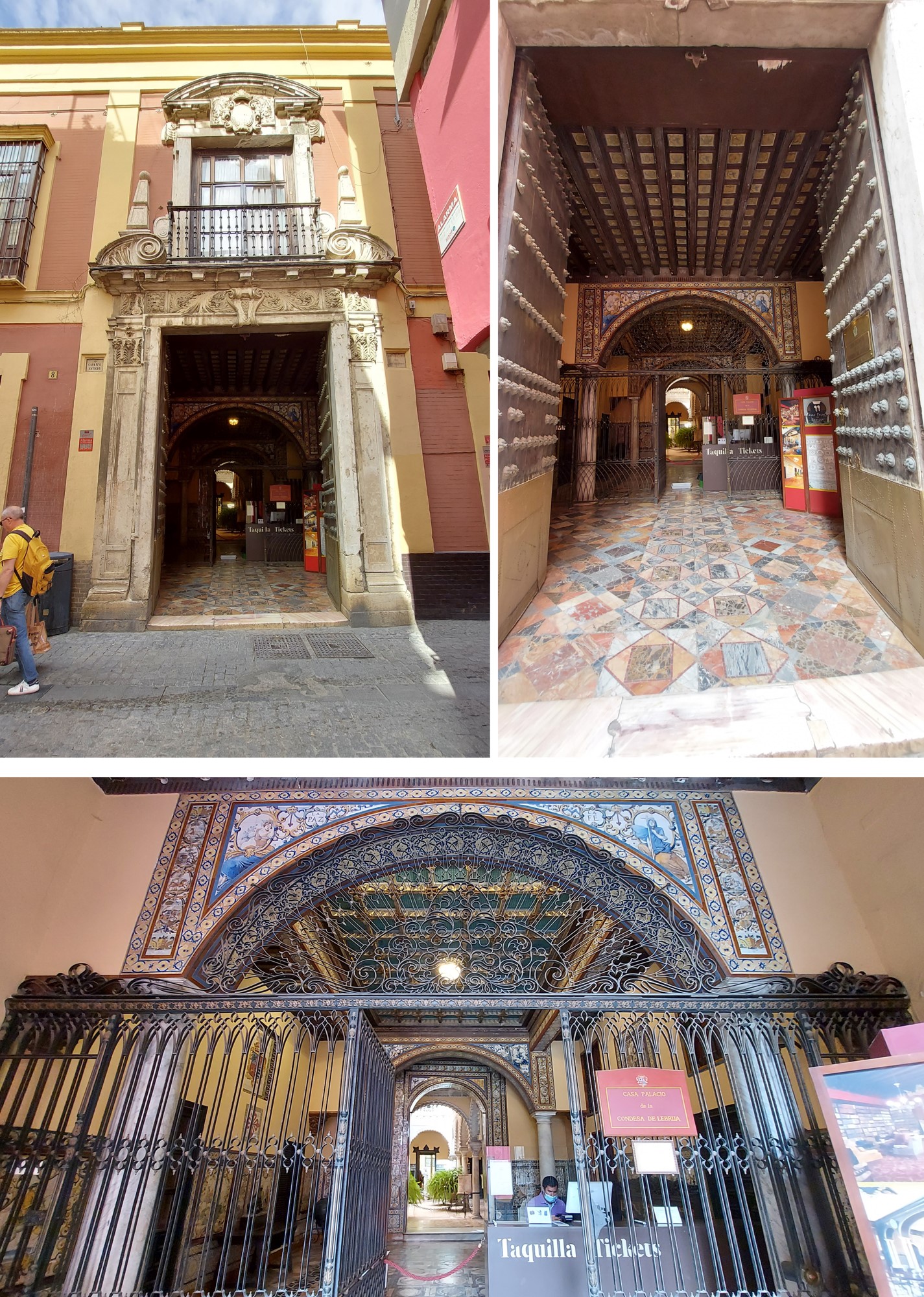
The Palace of Lebrija has a two-part entrance, carved in marble, with pilasters on the sides of the first floor. It is accessed by a hallway with a wooden roof, separated by a wide gilded and polychrome iron grille. Both the façade and the floor plan exhibit the Andalusian Sevillian style, typical of the 16th century.
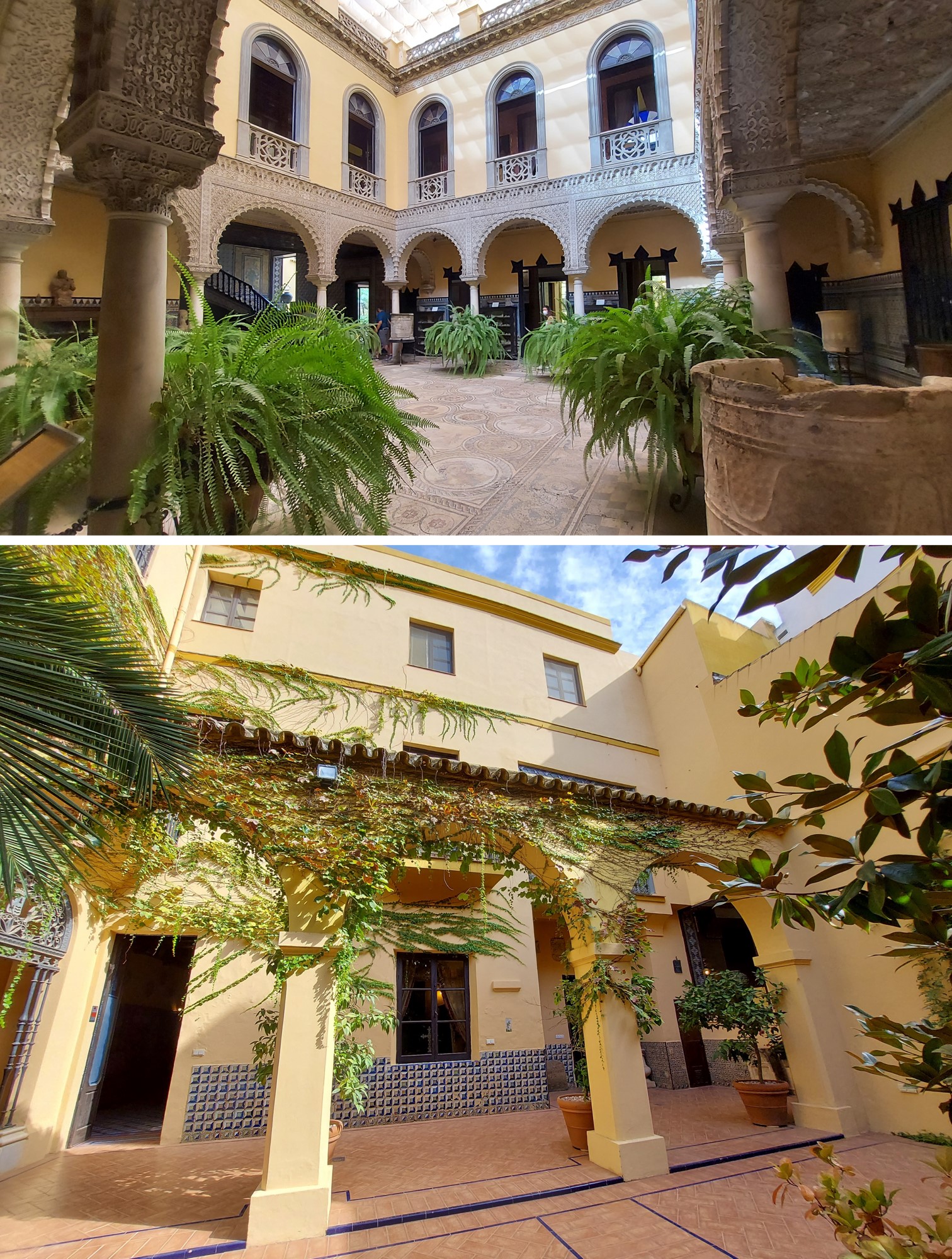
The complete structure has a surface of about 2,500 square meters distributed in two floors and its construction was divided into a winter house, located on the upper floor, and a summer house on the ground floor.
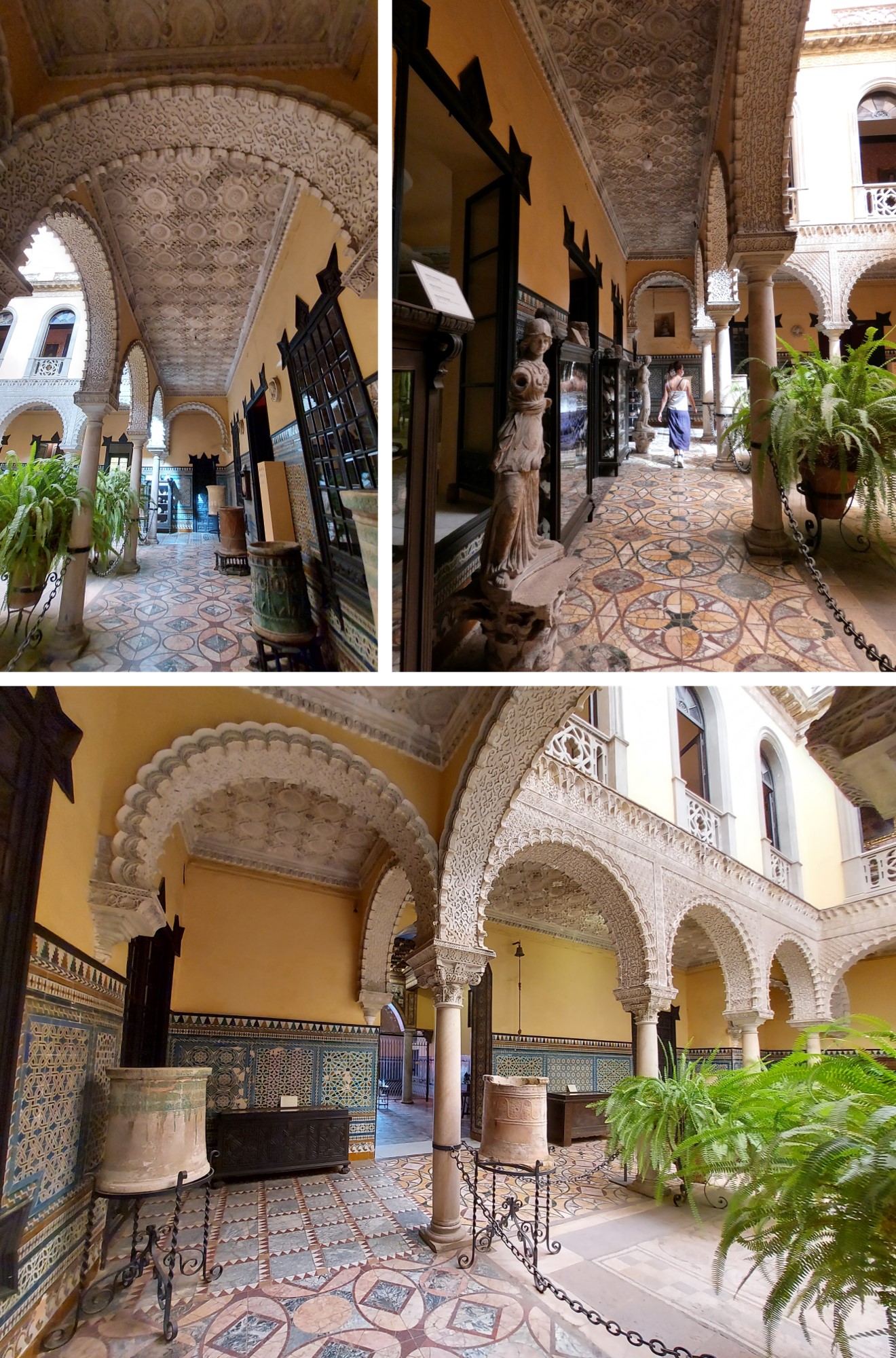
As a lover of archaeology, she decided to decorate the house-palace with pieces unearthed on her property, as well as other collections that she bought from antique dealers. Thus we observe that, on the first floor, composed of several halls and courtyards, there are archaeological remains and collections from different periods and cultures. Its 580 square meters of Roman mosaics on floors and walls contain the largest private collection of this artistic genre in the world.
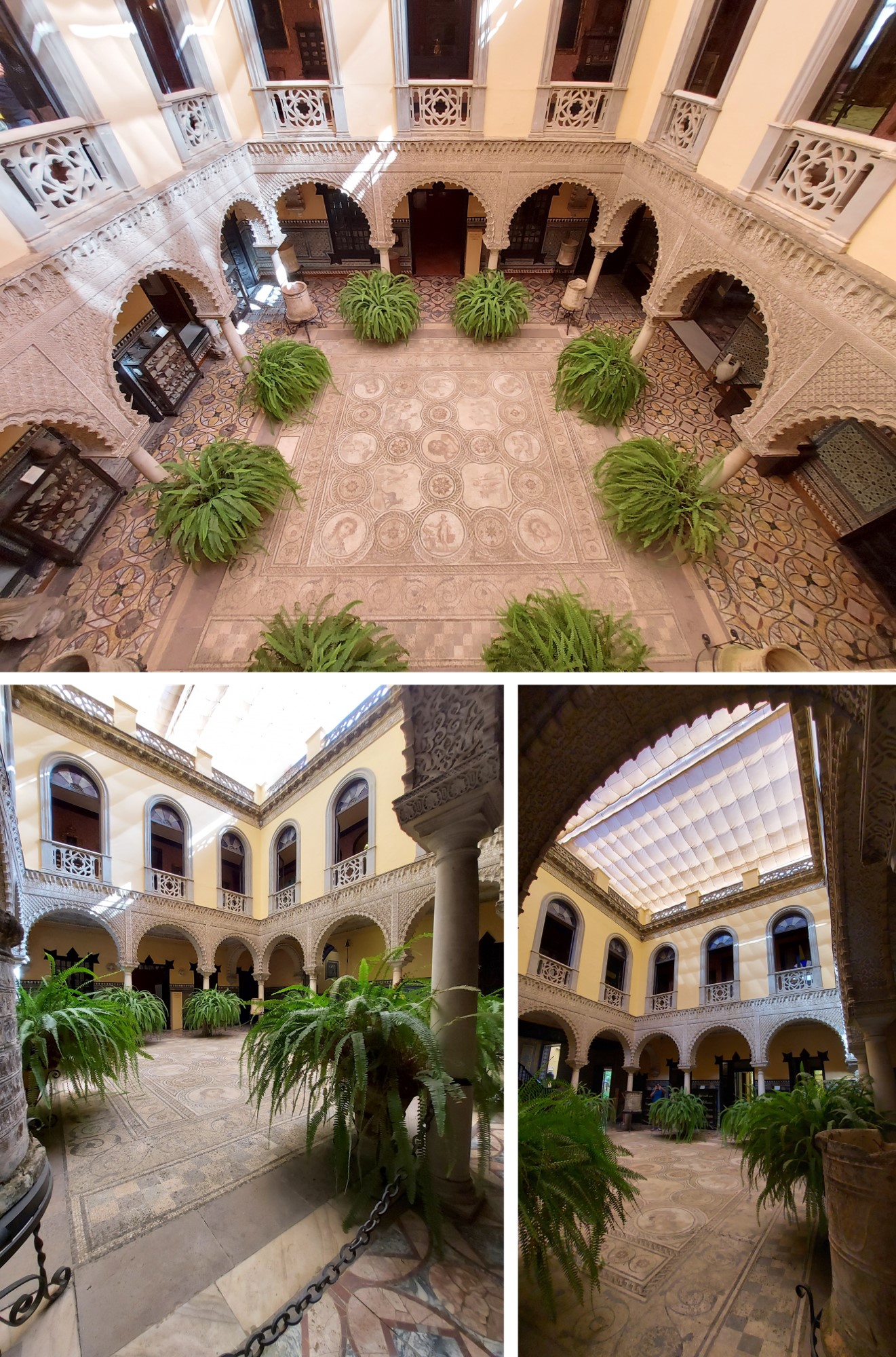
In the central courtyard, the plasterwork that adorns arches with marble columns, and on the floor, the Roman mosaic dating from the second and third centuries, stand out. This mosaic appeared on land owned by the Countess, specifically in the olive grove of the Palace.
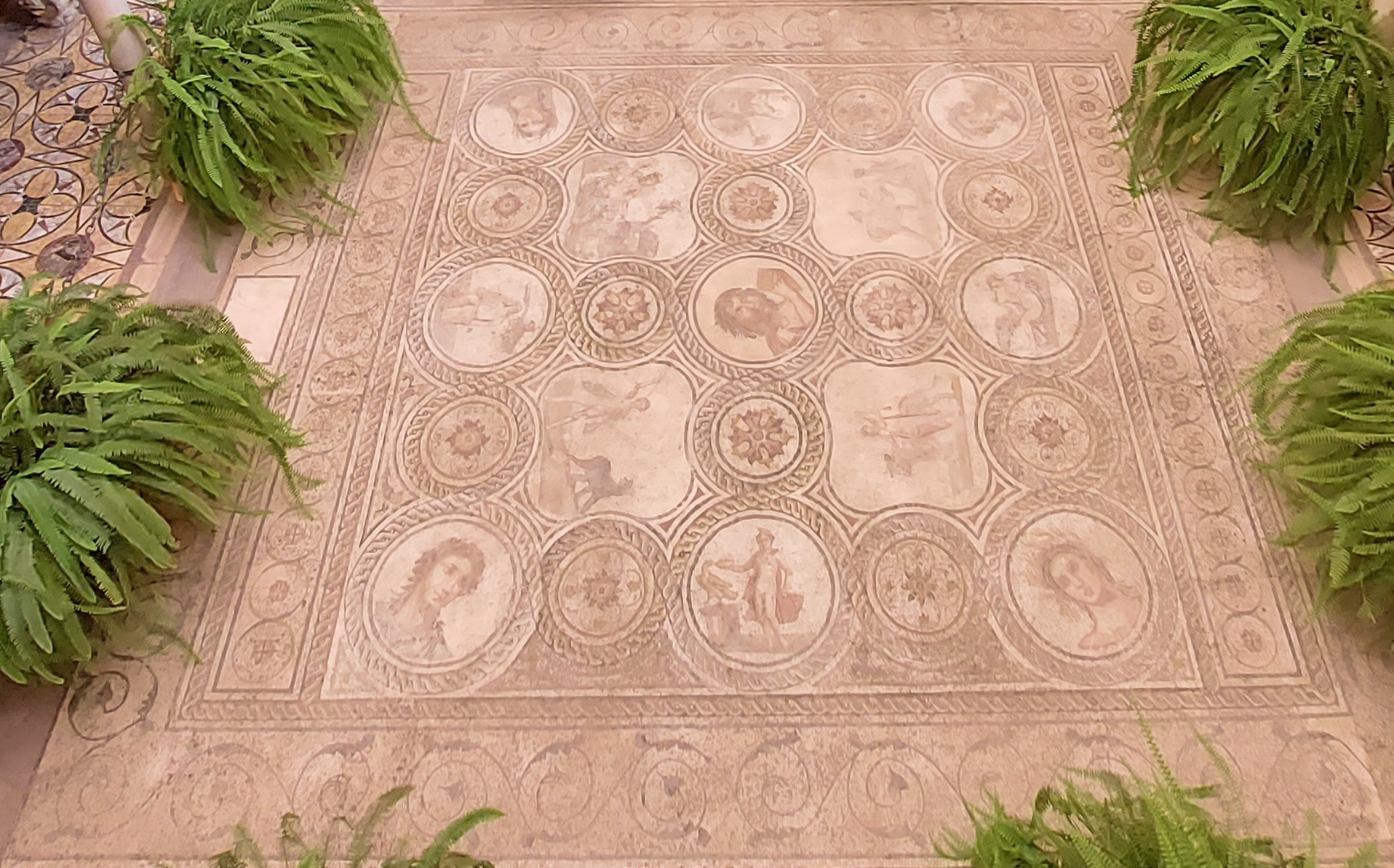
The central medallion represents the god Pan with the flute, in love with Galatea, to whom he dedicates his melodies and songs, eight medallions represent scenes of the amorous adventures of Zeus and the seasons of the year are represented in the four corners.
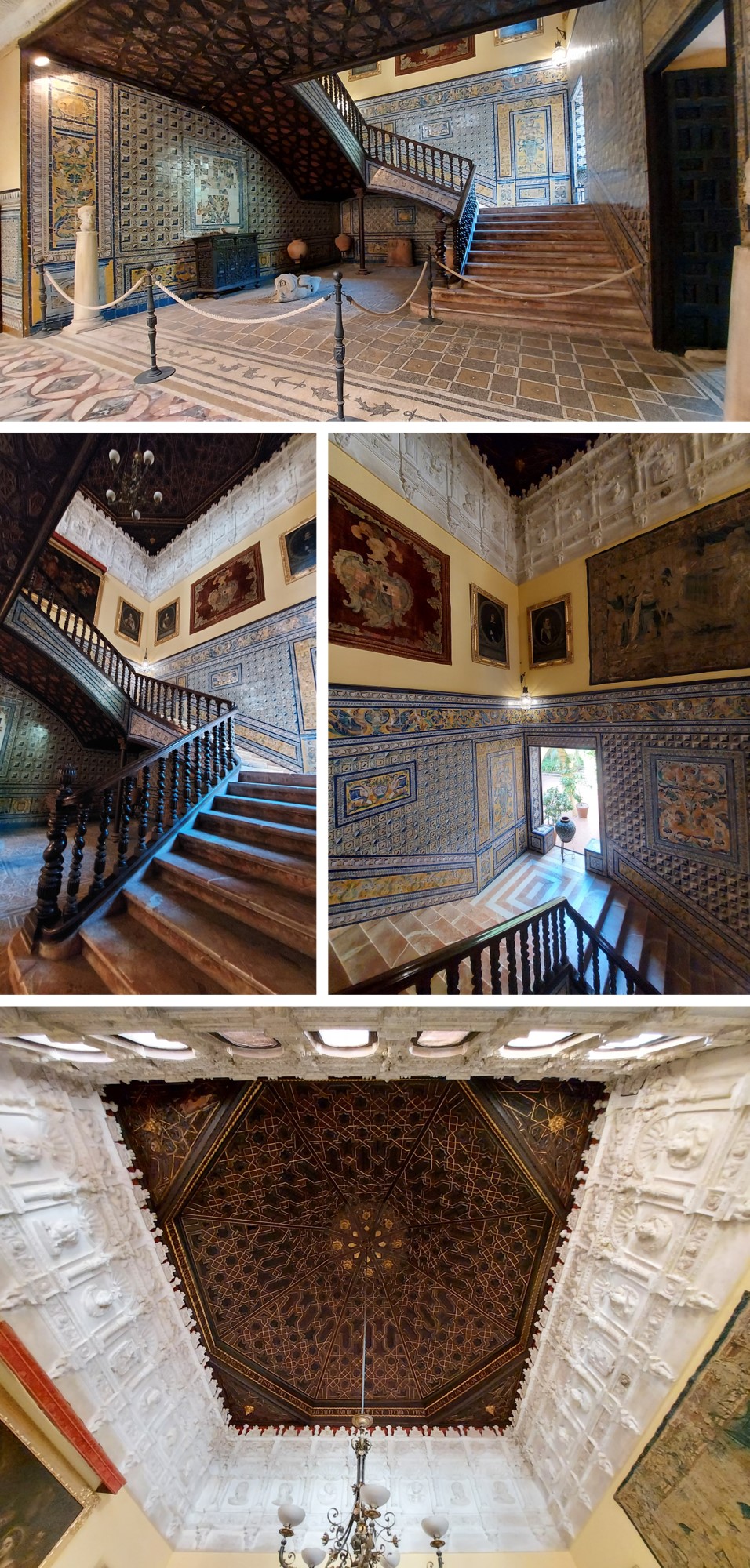
The main staircase of the Palace of Lebrija that access the upper level is magnificent. It is a Sevillian staircase of Andalusian style with three unequal flights, built with materials of very diverse origin of the XVI and XVII centuries, emphasizing the coffered ceiling.
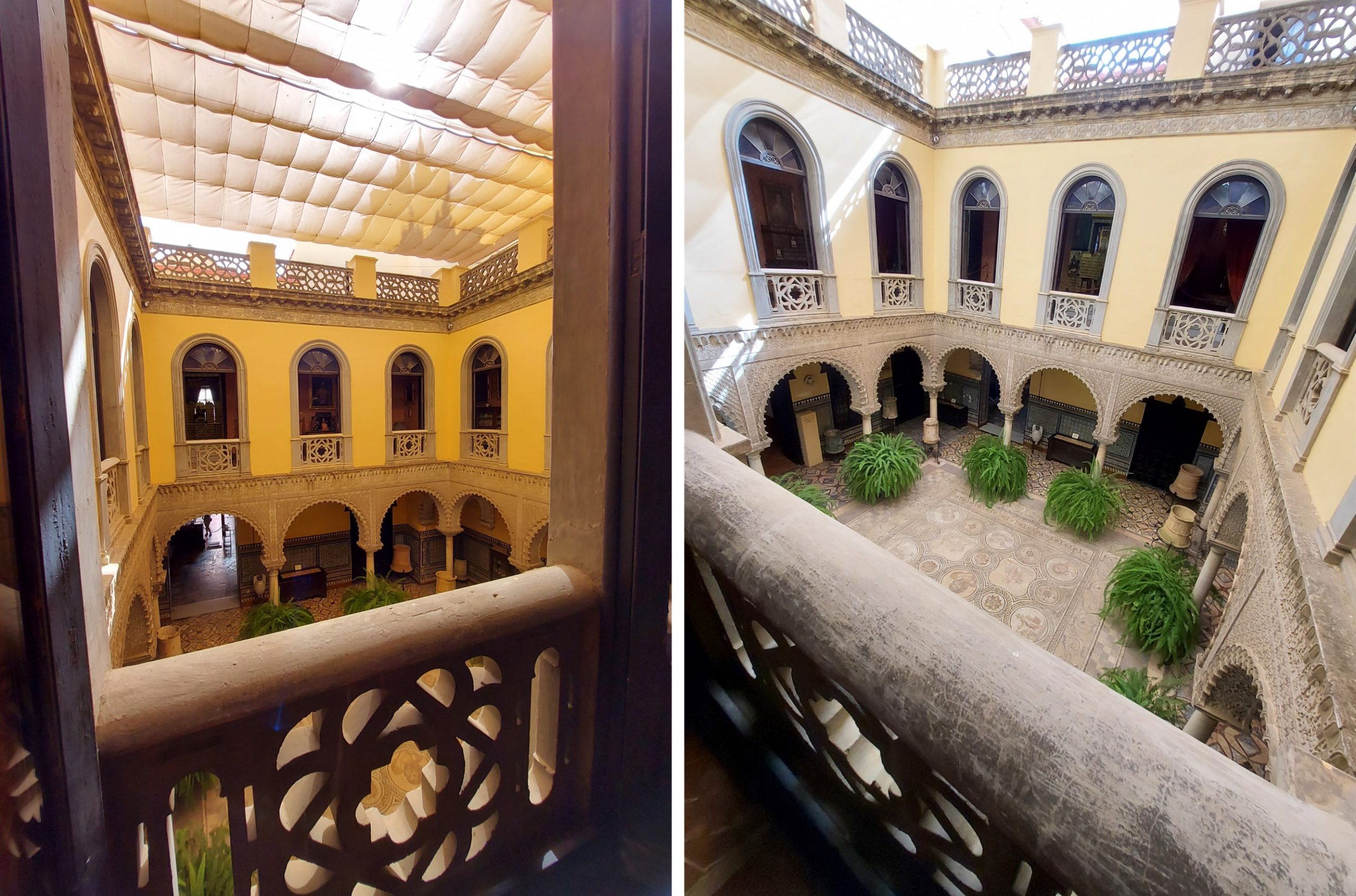
The upper floor shows the rooms kept in their original as the family lived, until the last Count of Lebrija died in 1999. Decorated with period furniture and pieces brought from all over the world, as well as personal objects of the Countess and her husband, bought during their travels. It also has a large library containing more than 4,000 volumes of books on different subjects. Photographing is not allowed in this part of the palace, but we can say that the spaces are richly decorated.
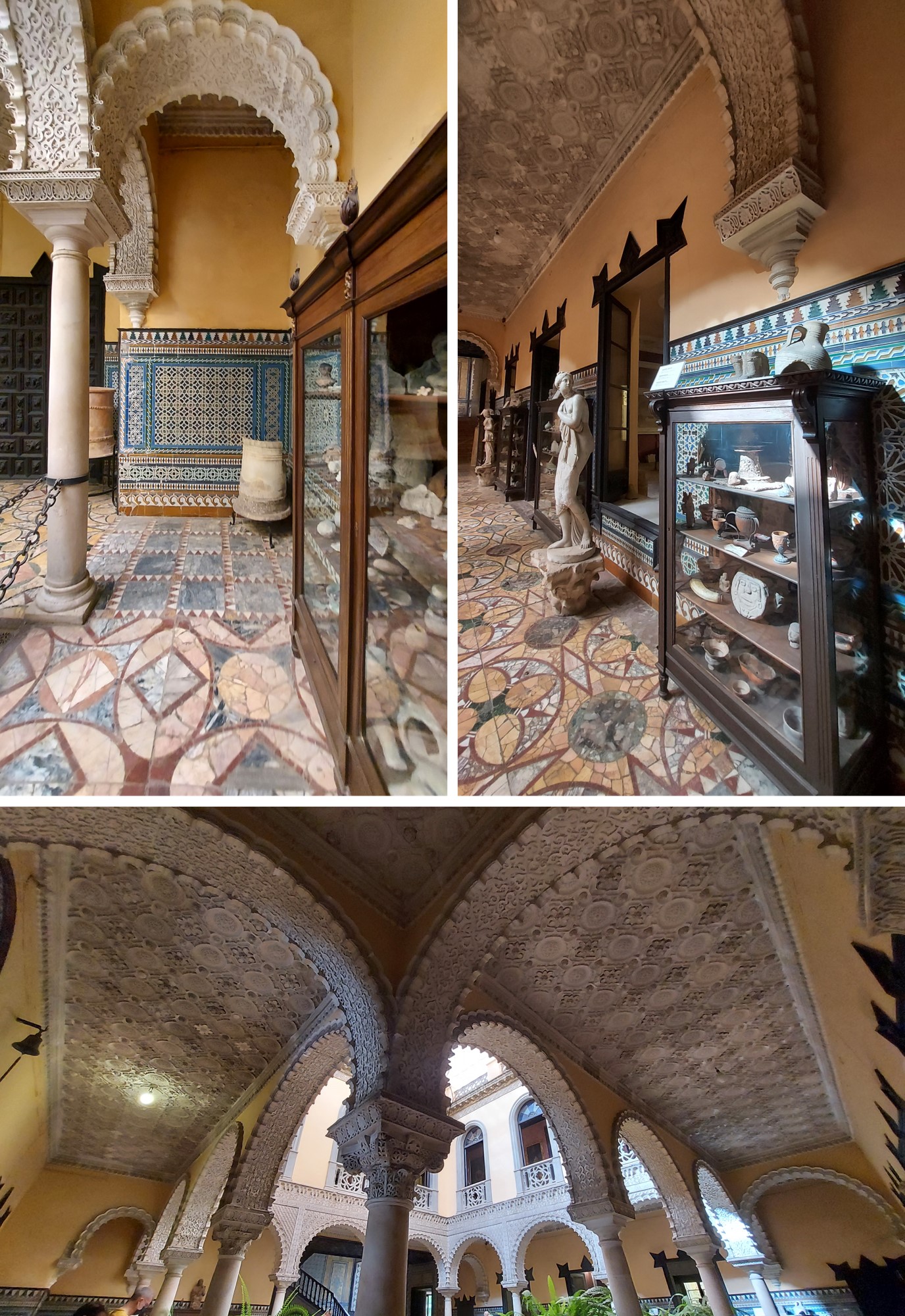
Recognizing the archaeological and historical value of the pieces exhibited here, it is worth asking how the Countess of Lebrija could have amassed such a rich collection. It was precisely in the late 19th and early 20th centuries that many of the great archaeological discoveries of mankind took place. Therefore, it is not surprising that wealthy people with good social position, could acquire pieces of ancient civilizations found in excavations and make them their own, through antique dealers. On the other hand, in the case of finding archaeological pieces in private properties, many reached agreements with the Government where they committed themselves to protect and take care of the pieces found, in exchange for being able to keep them with them. The Countess of Lebrija was fortunate enough to not only acquire pieces in antiquities markets, but also to conserve those found on the grounds of her properties.
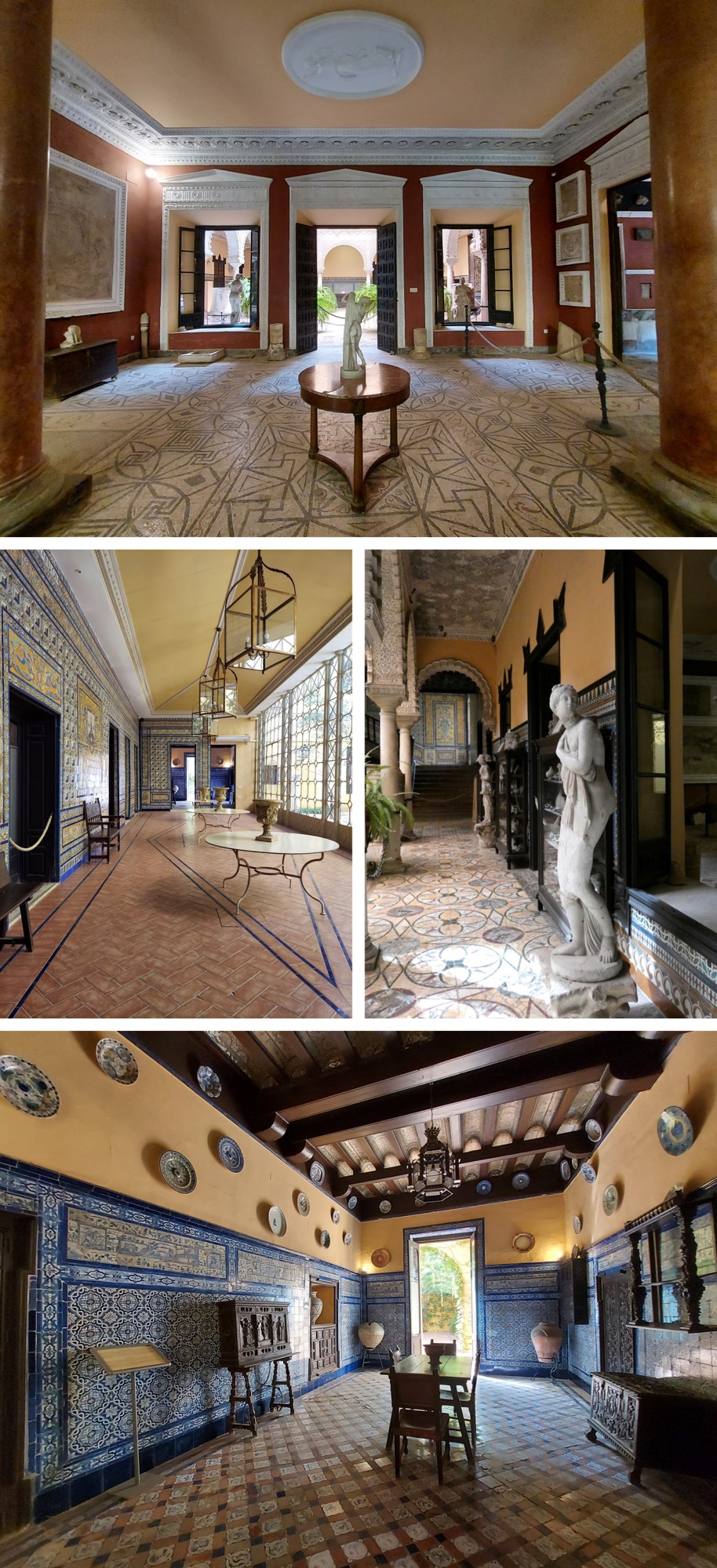
The descendants of the Countess and current owners decided in 1999 to open the house to the public as a museum. Since then the first floor can be visited freely and the upper floor, where the family rooms are located, can be visited with a guide. In addition, its halls and courtyards are rented for presentations, gala dinners, conferences and concerts, among other activities.
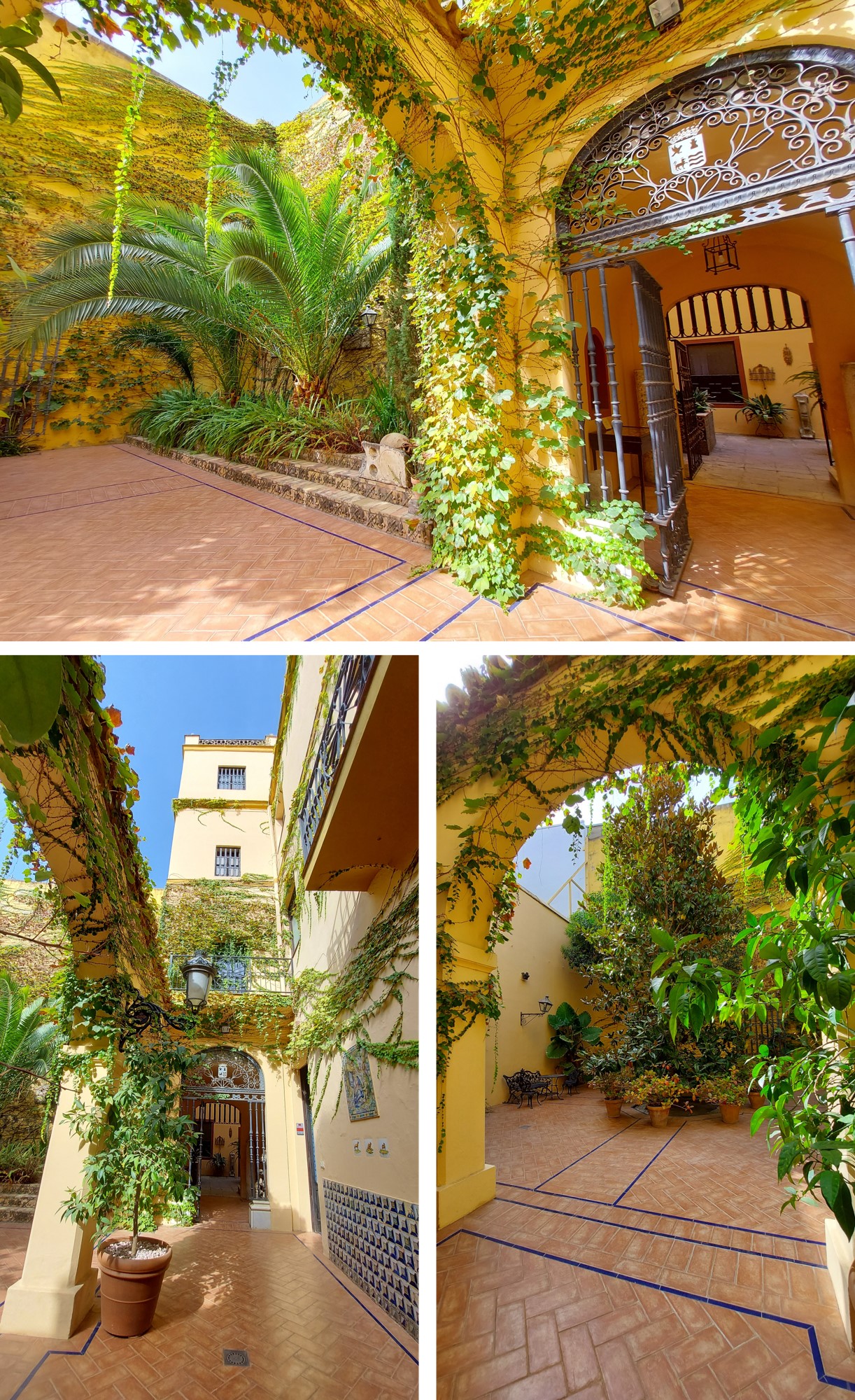
Resources:
https://es.wikipedia.org/wiki/Palacio_de_la_condesa_de_Lebrija_(Seville)
https://palaciodelebrija.com/
https://www.visitarsevilla.com/que-ver/monumentos/palacio-condes-de-lebrija/
